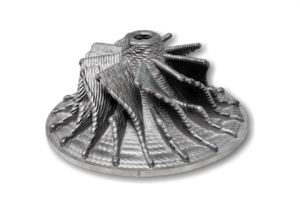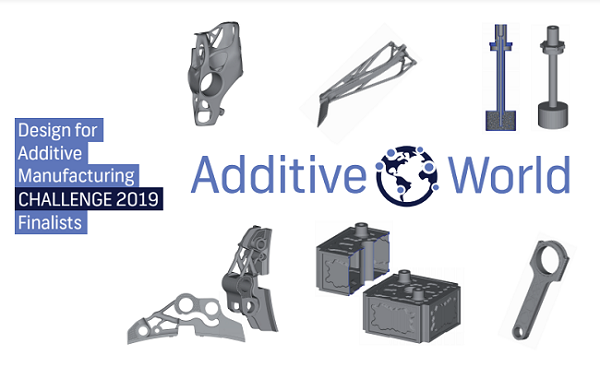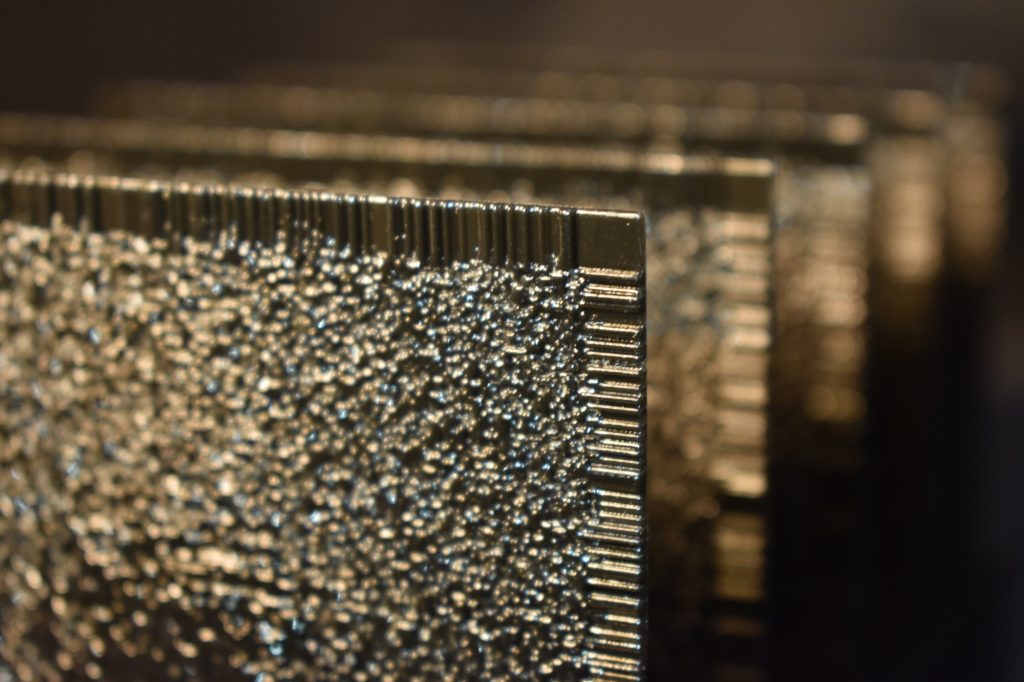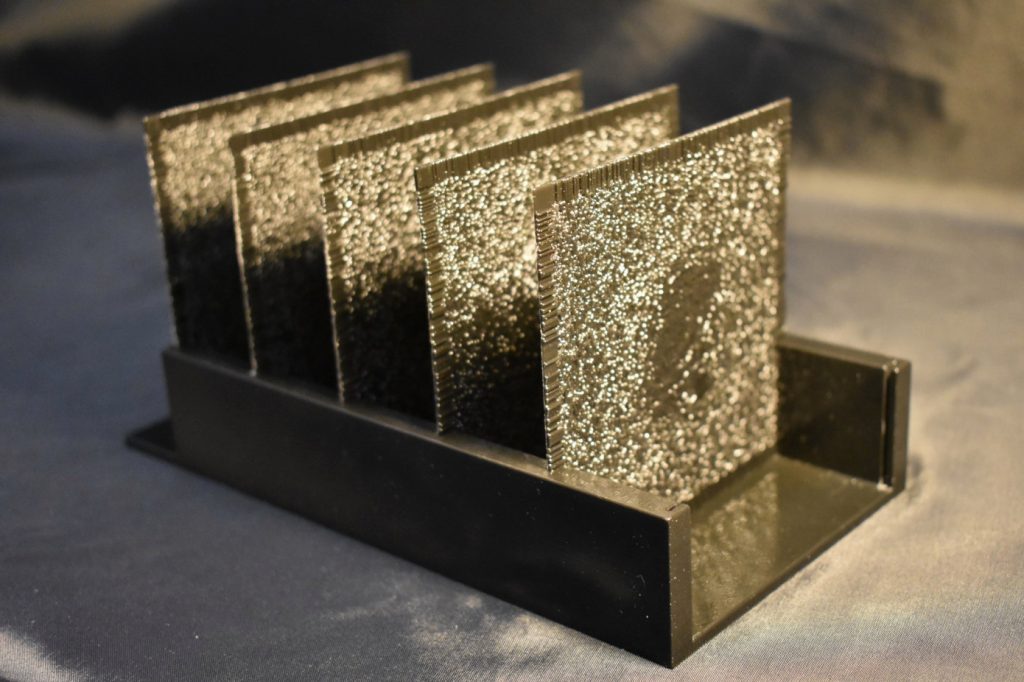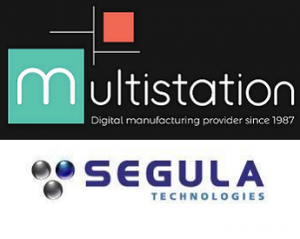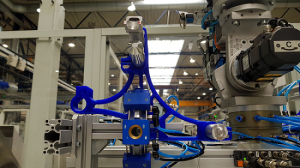We made it to the weekend! To celebrate, check out our 3D Printing News Briefs today, which covers business, research, and a few other topics as well. PostProcess has signed its 7th channel partner in North America, while GEFERTEC partners with Linde on 3D printing research. Researchers from Purdue and USC are working together to develop new AI technology, and the finalists for Additive World’s Design for Additive Manufacturing 2019 competition have been announced. Finally, Marines in Hawaii used 3D printing to make a long overdue repair part, and Thermwood and Bell teamed up to 3D print a helicopter blade mold.
PostProcess Technologies Signs Latest North American Channel Partner
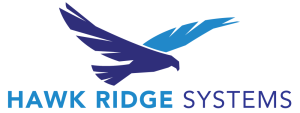 PostProcess Technologies, which provides automated and intelligent post-printing solutions for additive manufacturing, has announced its seventh North American Channel Partner in the last year: Hawk Ridge Systems, the largest global provider of 3D design and manufacturing solutions. This new partnership will serve as a natural extension of Hawk Ridge Systems’ AM solutions portfolio, and the company will now represent PostProcess Technologies’ solution portfolio in select North American territories.
PostProcess Technologies, which provides automated and intelligent post-printing solutions for additive manufacturing, has announced its seventh North American Channel Partner in the last year: Hawk Ridge Systems, the largest global provider of 3D design and manufacturing solutions. This new partnership will serve as a natural extension of Hawk Ridge Systems’ AM solutions portfolio, and the company will now represent PostProcess Technologies’ solution portfolio in select North American territories.
“Hawk Ridge Systems believes in providing turnkey 3D printers for our customers for use in rapid prototyping, tooling, and production manufacturing. Often overlooked, post-printing is a critical part of all 3D printing processes, including support removal and surface finish refinement,” said Cameron Carson, VP of Engineering at Hawk Ridge Systems. “PostProcess Technologies provides a comprehensive line of equipment that helps our customers lower the cost of labor and achieve more consistent high-quality results for our 3D printing technologies, including SL (Vat polymerization), MJF (Sintered polymer), and ADAM (Metal) printing. We vet our partnerships very closely for consistent values and quality, and I was impressed with PostProcess Technologies’ reputation for reliability and quality – an ideal partnership to bring solutions to our customers.”
GEFERTEC and Linde Working Together on 3D Printing Research
In order to investigate the influence of the process gas and the oxygen percentage on 3DMP technology, which combines arc welding with CAD data of metal parts, GEFERTEC GmbH and Linde AG have entered into a joint research project. The two already work closely together – Linde, which is part of the larger Linde Group, uses its worldwide distribution network to supply process gases for 3D printing (especially DMLS/metal 3D printing/LPBF), while GEFERTEC brings its arc machines, which use wire as the starting material to create near-net-shaped parts in layers; conventional milling can be used later to further machine the part after 3D printing is complete.
The 3D printing for this joint project will take place at fellow research partner Fraunhofer IGCV‘s additive manufacturing laboratory, where GEFERTEC will install one of its 3D printers. The last research partner is MT Aerospace AG, which will perform mechanical tests on the 3D printed parts.
Purdue University and USC Researchers Developing New AI Technology
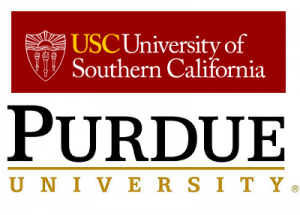 In another joint project, researchers from Purdue University and the University of Southern California (USC) are working to develop new artificial intelligence technology that could potentially use machine learning to enable aircraft parts to fit together more precisely, which means that assembly time can be reduced. The work speaks to a significant challenge in the current AM industry – individual 3D printed parts need a high level of both precision and reproducibility, and the joint team’s AI technology allows users to run software components in their current local network, exposing an API. Then, the software will use machine learning to analyze the product data and build plans to 3D print the specific parts more accurately.
In another joint project, researchers from Purdue University and the University of Southern California (USC) are working to develop new artificial intelligence technology that could potentially use machine learning to enable aircraft parts to fit together more precisely, which means that assembly time can be reduced. The work speaks to a significant challenge in the current AM industry – individual 3D printed parts need a high level of both precision and reproducibility, and the joint team’s AI technology allows users to run software components in their current local network, exposing an API. Then, the software will use machine learning to analyze the product data and build plans to 3D print the specific parts more accurately.
“We’re really taking a giant leap and working on the future of manufacturing. We have developed automated machine learning technology to help improve additive manufacturing. This kind of innovation is heading on the path to essentially allowing anyone to be a manufacturer,” said Arman Sabbaghi, an assistant professor of statistics in Purdue’s College of Science.
“This has applications for many industries, such as aerospace, where exact geometric dimensions are crucial to ensure reliability and safety. This has been the first time where I’ve been able to see my statistical work really make a difference and it’s the most incredible feeling in the world.”
Both 3D Printing and AI are very “hot” right now. Outside of the hype there are many ways that machine learning could be very beneficial for 3D printing in coming years in part prediction, melt pool monitoring and prediction, fault analysis and in layer QA. Purdue’s technology could be a possible step forward to “Intelligent CAD” that does much of the calculation, analysis and part generation for you.
Finalists Announced for Design for Additive Manufacturing Challenge
Additive Industries has announced the finalists for its Additive World Design for Additive Manufacturing Challenge, a yearly competition where contestants redesign an existing, conventionally manufactured part of a machine or product with 3D printing, taking care to use the technology’s unique design capabilities, like custom elements and thin walls. This year, over 121 students and professionals entered the contest, and three finalists were chosen in each category, with two honorable mentions – the Unibody Hydraulic System by from Italy’s Aidro Hydraulics & 3D Printing and the Contirod-Düse from Nina Uppenkam, SMS Group GmbH – in the professional category.
“The redesigns submitted from all over the world and across different fields like automotive, aerospace, medical, tooling, and high tech, demonstrated how product designs can be improved when the freedom of additive manufacturing is applied,” said Daan Kersten, CEO of Additive Industries. “This year again we saw major focus on the elimination of conventional manufacturing difficulties, minimization of assembly and lowering logistical costs. There are also interesting potential business cases within both categories.”
The finalist designs are listed below, and can be seen in the image above, left to right, top to bottom:
- “Hyper-performance suspension upright” from Revannth Narmatha Murugesan, Carbon Performance Limited (United Kingdom, professional)
- “Cutting dough knife” from Jaap Bulsink, K3D (The Netherlands, professional)
- “Cold Finger” from Kartheek Raghu, Wipro3D (India, professional)
- “Brake Caliper” from Nanyang Technological University team (Singapore, student)
- “Cubesat Propellant Tank” from Abraham Mathew, the McMaster University (Canada, student)
- “Twin Spark Connecting Rod” from Obasogie Okpamen, the Landmark University (Nigeria, student)
Marines 3D Printed Repair Part
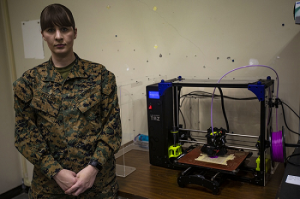
US Marine Corps Lance Cpl. Tracey Taylor, a computer technician with 7th Communications Battalion, aboard Marine Corps Base Camp Hansen in Okinawa, Japan, is one of the Marines that utilize 3D printing technology to expand capabilities within the unit. [Photo: US Marine Corps Cpl. George Melendez]
To save time by moving past the lengthy requisitioning process, 3D printing was used at Marine Corps Base Hawaii, Kaneohe Bay, to create a repair part that would help fix a critical component to increase unit readiness. This winter, Support Company, Combat Logistics Battalion (CLB) 3 fabricated the part for the Electronic Maintenance (EM) Platoon, 3rd Radion Battalion, and both EM technicians and members of CLB-3 worked together to design, develop, and 3D print the part, then repaired the component, within just one month, after having spent almost a year trying to get around delays to fix it.
US Marine Cpl. Anthony Farrington, designer, CLB-3, said that it took about three hours to design the replacement part prototype, and an average between five to six hours to 3D print it, before it was used to restore the unit to full capability.
“With the use of 3D printing, Marines are empowered to create solutions to immediate and imminent challenges through additive manufacturing innovation,” said subject matter expert US Marine Chief Warrant Officer 3 Waldo Buitrago, CLB-3.
“We need to embrace 3D printing and encourage our Marines to express their creativity, which in turn, could lead to solutions in garrison and combat such as in this case study.”
3D Printed Helicopter Blade Mold
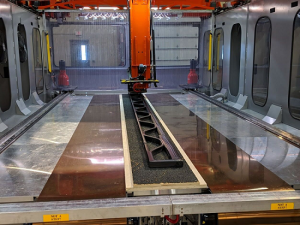 Thermwood and Bell recently worked together to create a 3D printed tool, but not just any 3D printed tool. Thermwood believes that the 3D printed helicopter blade mold is the largest ever 3D printed autoclave-capable tool. Bell, frustrated with expensive tooling that took a long lead time, reached out to Thermwood for help, and the company suggested its LSAM system, with new 60 mm melt core technology. Bell then provided Thermwood with a 20-foot-long, 17-inch-high, 14-inch-wide closed cavity blade mold, and upon receiving both the model and Bell’s tooling requirements, Thermwood began printing the tool with Techmer PM’s 25% carbon fiber reinforced PESU material (formulated specifically for its LSAM additive printing) in a continuous run. The new melt core can achieve a high print rate, even when processing high temperature material, which was great news for Bell.
Thermwood and Bell recently worked together to create a 3D printed tool, but not just any 3D printed tool. Thermwood believes that the 3D printed helicopter blade mold is the largest ever 3D printed autoclave-capable tool. Bell, frustrated with expensive tooling that took a long lead time, reached out to Thermwood for help, and the company suggested its LSAM system, with new 60 mm melt core technology. Bell then provided Thermwood with a 20-foot-long, 17-inch-high, 14-inch-wide closed cavity blade mold, and upon receiving both the model and Bell’s tooling requirements, Thermwood began printing the tool with Techmer PM’s 25% carbon fiber reinforced PESU material (formulated specifically for its LSAM additive printing) in a continuous run. The new melt core can achieve a high print rate, even when processing high temperature material, which was great news for Bell.
Glenn Isbell, Vice President of Rapid Prototyping and Manufacturing Innovation at Bell, said, “Thermwood’s aggressive approach to pushing the boundaries and limitations of traditional 3D printing and machining is exactly what we were looking for.”
The final bond tool was able to maintain the vacuum standards required by Bell for autoclave processing right off the printer, without needing a seal coating. Thermwood will soon 3D print the second half of the blade mold, and both teams will complete further testing on PESU 3D printed molds for the purpose of continued innovation.
Discuss these stories and other 3D printing topics at 3DPrintBoard.com or share your thoughts in the Facebook comments below.

